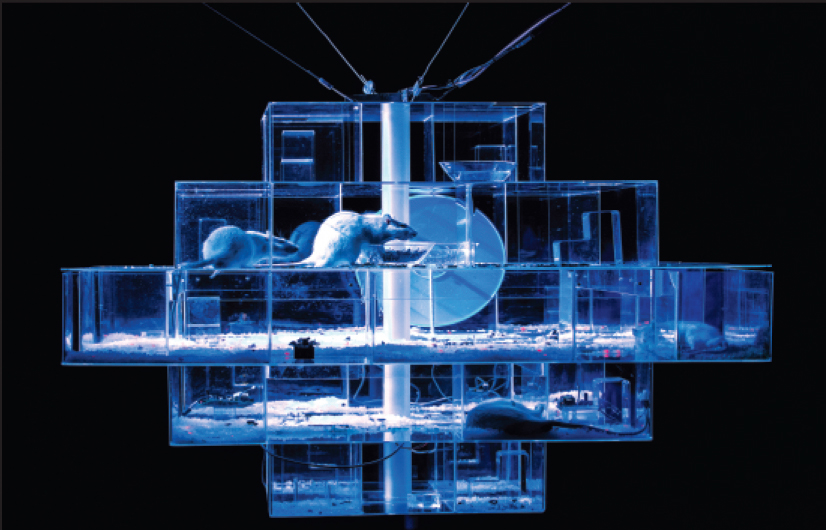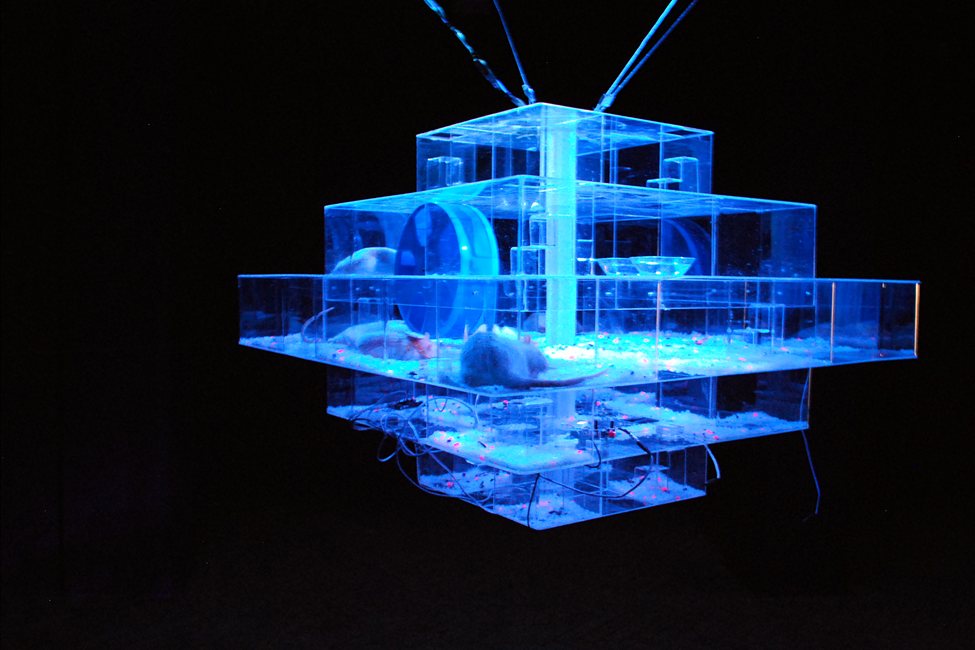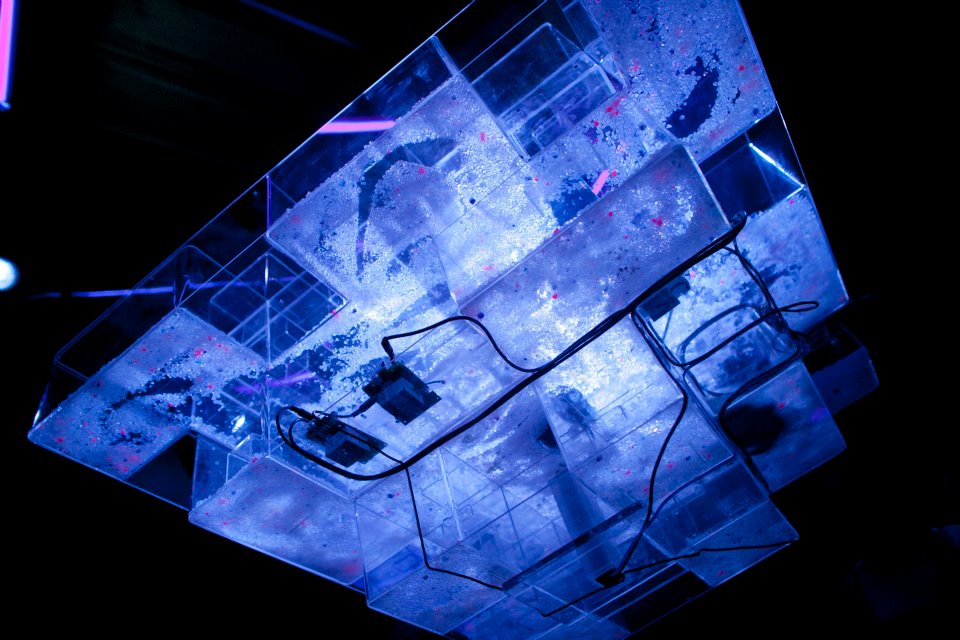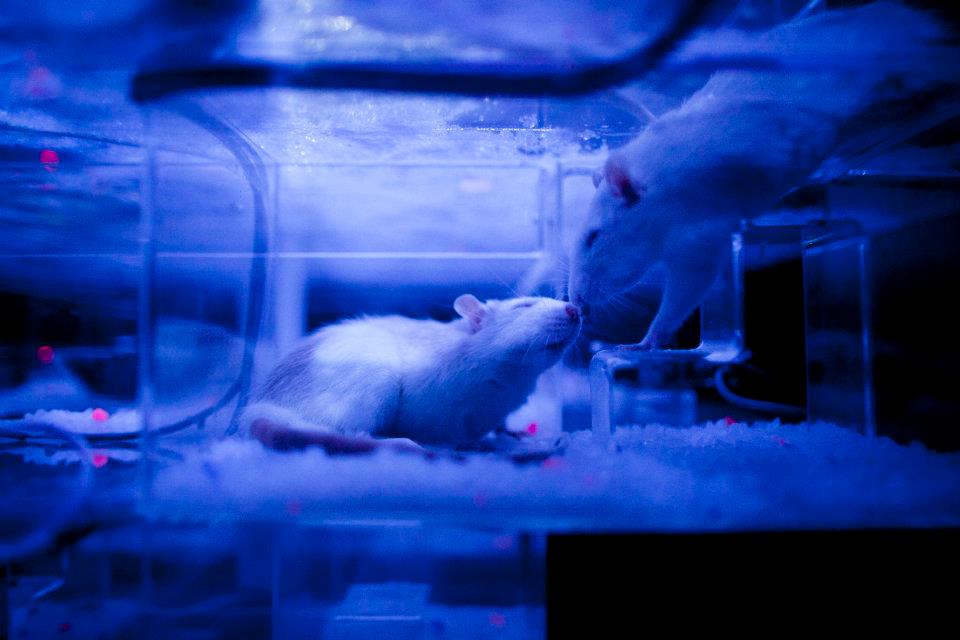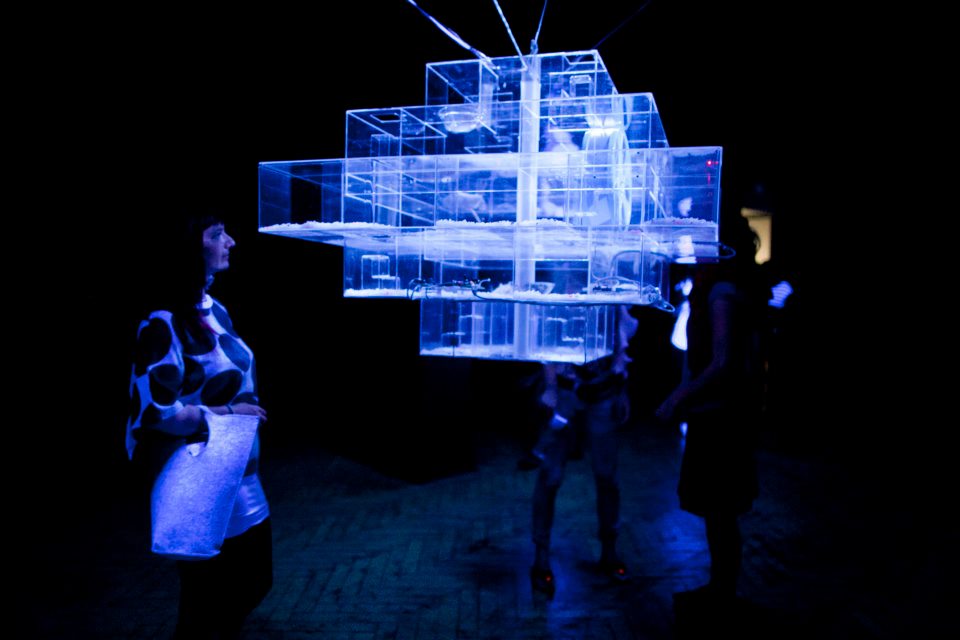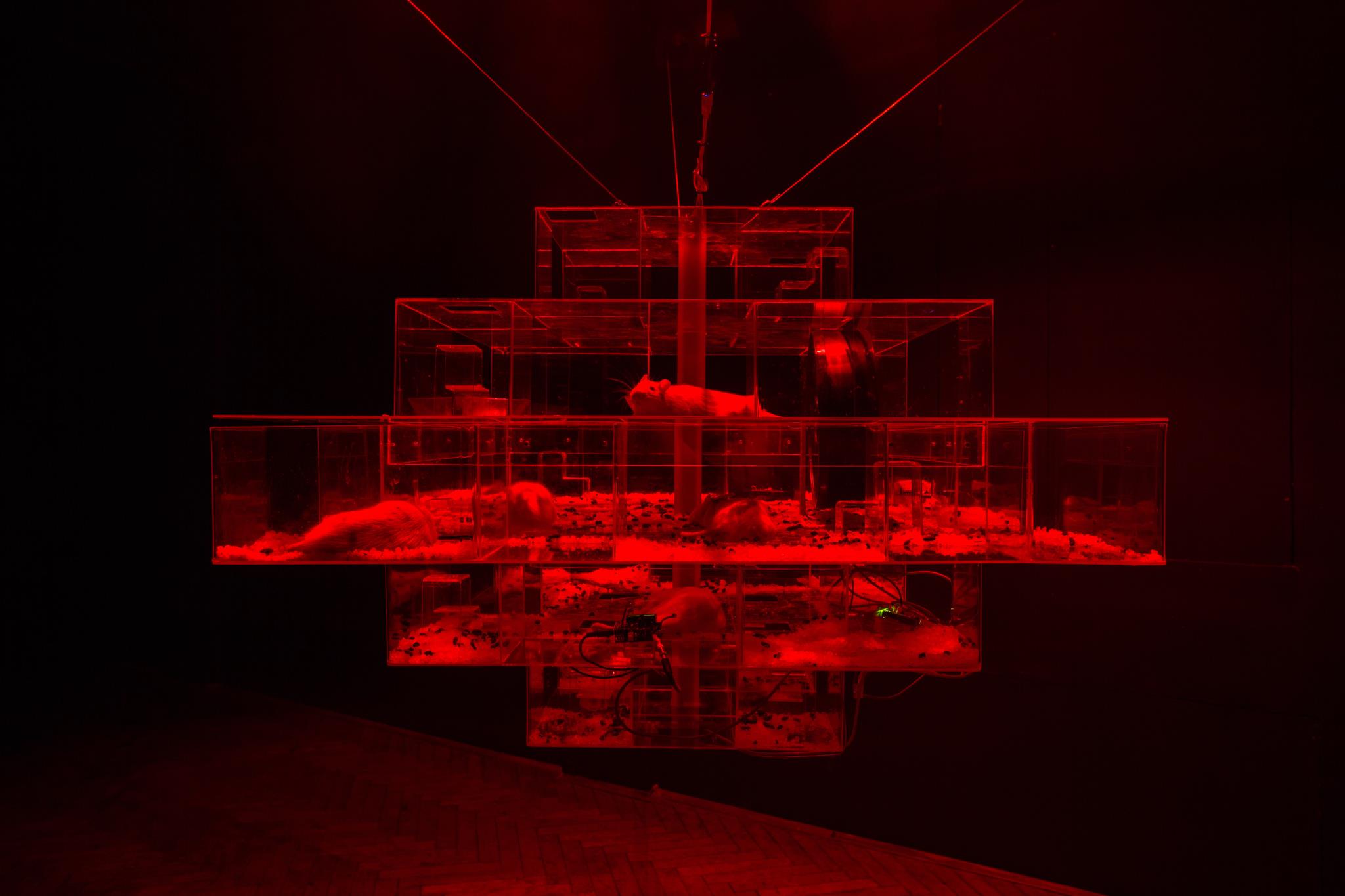Circadian Drift
2012
Circadian rhythms (from Latin “circa dies” = approximately one day) are present in almost all living organisms and are a product of evolutional development as an adjustment to Earth’s revolution around its axis. They are driven by internal molecular clocks that are synchronized with the environment by external factors, most significantly, by sunlight. Circadian Drift is an interactive installation, which reflects the human’s circadian rhythm thus paraphrasing the lack of synchronicity between the natural and sovereign body in the dynamics of modern society. Six rats, a species that has similar mechanisms of managing circadian rhythms as humans, will be through sensors thelematically exposed to identical lighting conditions as the human volunteer through sensors. After a couple of days, the rhythms of both species will synchronize and the rats, which are not conditioned by our human culture, will serve as bio-indicators of our natural rhythms of activity.
The digitalization of communication environment, lack of daylight and the subsequently fast change of the spatial perception are altering the sensibility of human organism. The phenomenon of fast living joined within the surveillance of daily activities, influences integration of human bodies in the key systems of production, which is an imperative dynamics of the survival of capitalism. By acting within these social structures, humans generate novel ecological niches and modify the selective pressures, which are slowly followed by our biological adjustments. The paradigm of molecular bio-politics in this project paraphrases the process of social mutation of an individual into a biomedical self through the ontology of life in co-dependence of health dynamics and productivity. The current dis-synchronicity between evolutionary new – high productivity oriented forms of action and circadian rhythms (which are our evolutionary adaptation to day and night) is a contributing factor to the increase in modern diseases, such as depression, diabetes, cancer and cardiovascular diseases.
Authors: Maja Smrekar, dr. Špela Petric
Production: Kapelica Gallery
Project was presented as part of international initiative 'KiiCS - Knowledge Incubation in Innovation and Creation for Science', 3-year european partnership supported by 7th Framework Programme by Directorat General for Research and Innovation of the European Commission.
Type: Bioart Thelemetric Installation
Supported by: The Ministry of Culture of the Republic of Slovenia, The Ljubljana City Council - Cultural Department
Premiered: Kapelica Gallery, Ljubljana, Slovenia
